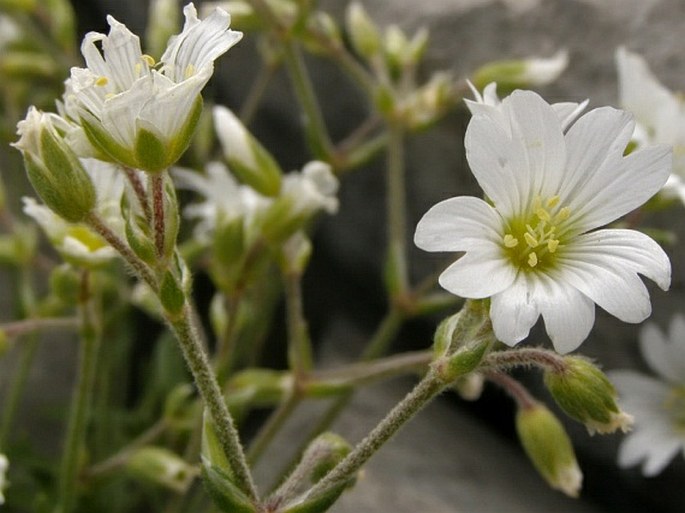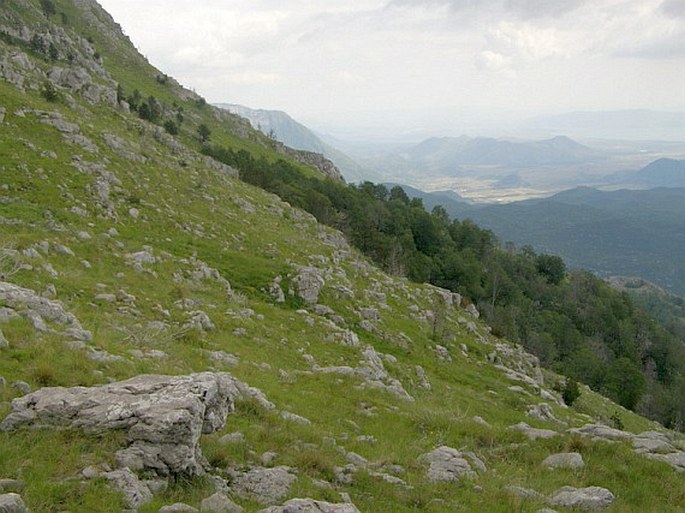Syn.: Cerastium albanicum (Bald.) Correns, Cerastium cernjavskii Georgiev, Cerastium lanigerum Clem., nom. illeg., Cerastium leontopodium (Stoj. et Stef.) T. Georgiev
Family: Caryophyllaceae Juss.

Distribution: Mountains of the Balkan Peninsula – the Dinarides and the Hellenides in all states of the former Yugoslavia, mountains of Albania, Bulgaria and Greece (incl. some of the East Eagean Islands).
Ecology: It grows in grasslands on rocky slopes, pine forests, in extensively grazed pastures and similar habitats. On calcareous soils (on limestones, dolomites, serpentinits), in 1000–2000(–2500) a. s. l.

Description: A perennial herb, 7–40 cm high, at least in inflorescense and on leaf margins with long, soft hairs. The leaves usually 3–5 mm wide, at least 3× longer than wide, lanceolate to elliptic-lanceolate, acute, tomentose to pubescent or glandular. The flowers in cyme, bracts and sepals lanceolate, acute, with wide scarious margins, sepals 6–8 mm long, pubescent, often glandular. The capsule 7–9 mm, broadly cylindrical, teeth erect, with revolute margins. The seeds 1–1,3 mm, strongly tuberculate.
Note: This species is very variable, mostly in type of trichomes, many varieties and forms have been described. Seven subspecies are accepted: subsp. adamovicii (Velen.) Stoj. et Stef., subsp. dollineri (Beck) Gajic ex Greuter et Burdet, subsp. durmitoreum (Rohlena) Gajic, subsp. histrio (Correns ex Prain) Greuter et Burdet, subsp. macedonicum (Georgiev) Stoj. et Stef., subsp. orbelicum (Velen.) Stoj. et Stef., subsp. sylvaticum (K. Malý) Niketic.
Confusion: From the pool of species with long, soft hairs on the Balkans only Cerastium grandiflorum Waldst. et Kit. have similar appearance, but leaves of this species are max. 1,5 mm wide.


These images were taken in Albania, the Prokletije, Maja e Veleçikut (June 24, 2010).


